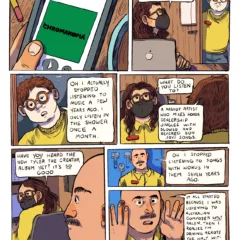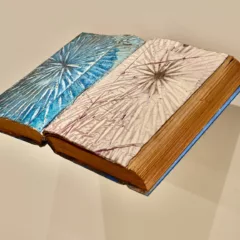[Donald gets a chance to see two of his idols live. — the Artblog editors]
When I heard that Herbie Hancock AND Chick Corea were touring the world with a stop at Philadelphia’s Academy of Music on April 11, I dashed at the chance to see this concert. When just one of these two musicians visits your city, you don’t simply walk…you run to see that concert! So with both Hancock and Corea on stage playing together, I knew that this was possibly a once-in-a-lifetime moment (both men are in their mid-70s!).
Heavy-hitters in harmony
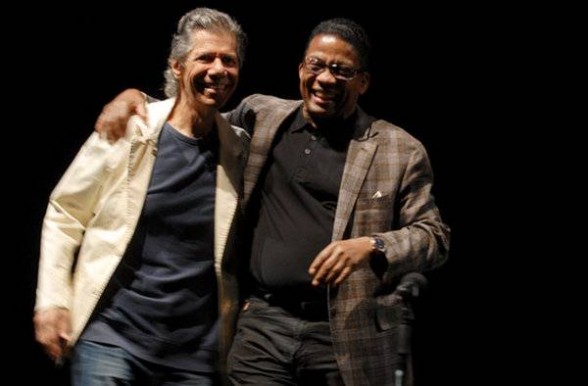
In addition to being a legendary pianist and composer, Hancock has been an integral part of every jazz movement since the 1960s. He has received an Academy Award for his Round Midnight score and 16 Grammy Awards throughout his illustrious career.
Corea is a DownBeat Hall of Famer and NEA Jazz Master, and has won an astounding 22 Grammy Awards. He has always managed to push his musical style further with each project, whether it be playing acoustic piano or electric keyboards, leading multiple bands, performing solo, or through cutting-edge collaborations. Even the religion of Scientology has influenced his ever-evolving compositions.
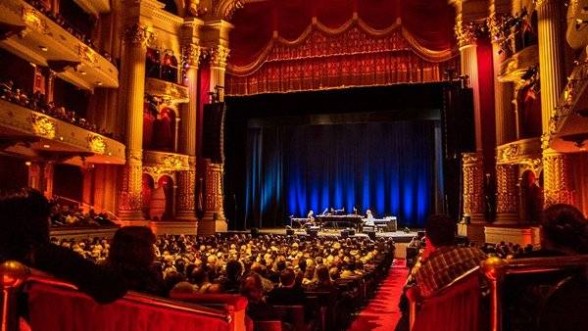
Hancock and Corea have a brother-like chemistry, built through a mutual collaborator in Miles Davis and previous live duo performances in 1978, culminating in a album of one of those concerts. They talk to each other on stage, with most of that banter inaudible to the audience. What the audience does know, however, is that this conversation is greatly serving the music, because that’s really what their concert is all about: a conversation. The two musicians were returning from the West Coast leg of their tour, and brought some of that much-needed warmth to Philadelphia.
A “painful” piece just for Philly
The concert had a good mix of the classic and new. Standards such as “Lineage” and “Maiden Voyage” surfaced among the fast-paced program.
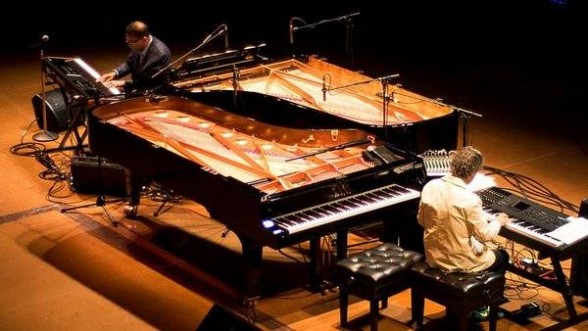
Midway into the performance, Hancock motioned to Corea and the audience, saying, “Let’s play something painful. There’s a lot of pain in this city; I can feel it.” That pain is often associated with Philly, as the city has developed a reputation over the years of being rough around the edges, despite being the birthplace of America. The two musicians proceeded to their electronic keyboards, creating spacey yet thumping textures and programming voice effects.
You could hear Corea’s altered voice saying “Come on,” “Mmph,” and “Uh” as Hancock’s hands ascended the keyboard. At the conclusion of the piece, Hancock asked, “Was it painful enough?” I’m sure some of their more conservatively choosy listeners may have preferred they shelved that one. I, however, took it as a jazz-electronica fusion sound that is destined to be more prevalent in the coming years.
The last piece of the night was Corea’s “Spain,” a piece that I grew weary of in high school, as every young jazz musician I knew was always riffing on it in the practice rooms. But the oversaturation of that piece in my personal experience went away when Corea put a unique spin on it during the encore. He let the audience become a part of the piece by dividing us into a five-part choir. At the end of the song’s form, Corea cued the audience sections to sing specific notes of several chords before he cut us off and went back to the head (the beginning of the piece).
This performance was one of those instances when I simply sat back and let the music flow into my body–so much that before I knew it, it was over. Hancock and Corea took their bows and the audience dispersed. I realized at that moment that the best art leaves the viewer on the edge of the seat…wanting just a little bit more.




